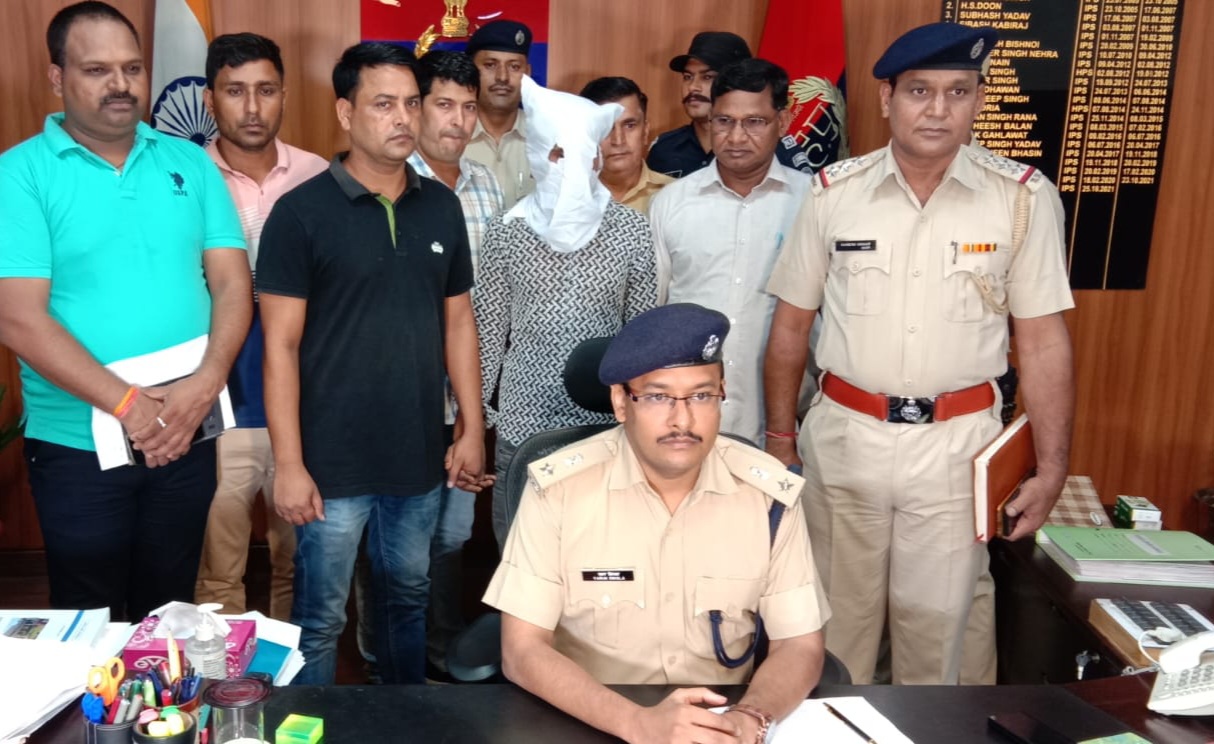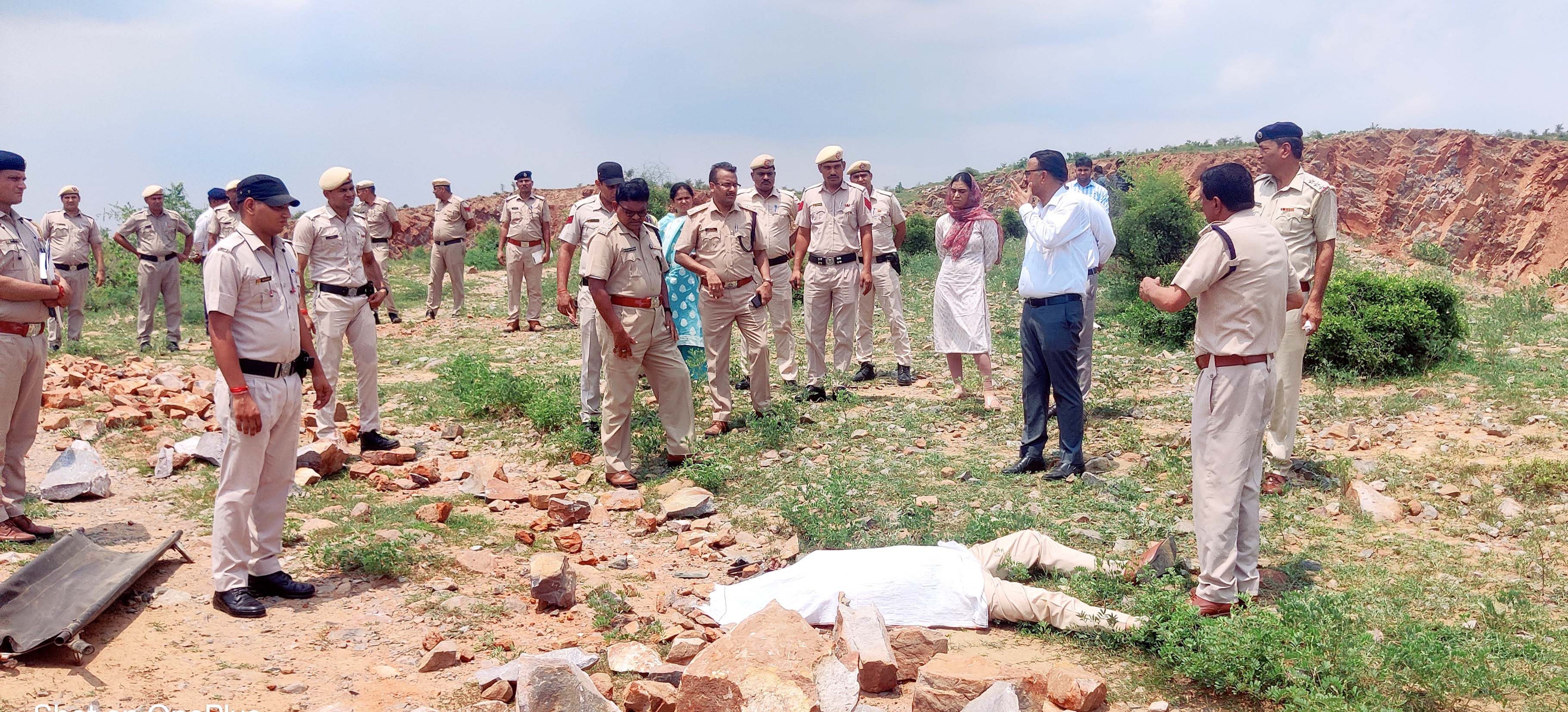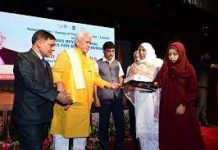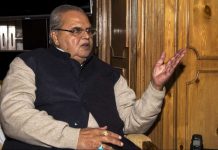
The Haryana police has turned the heat on illegal miners in the hills after the mowing down of a DSP by a dumper truck in Nuh. But with residents of over 20 villages in Nuh and around 100 in Alwar dependent on mining for their livelihood, curbing the menace will be a tightrope walk for the government, writes Aayush Goel
Degraded and tattered stone by stone, and now drenched in blood. Aravalis has seen it all. If lores are to go by, the plundering has existed ever since hills themselves and even a 13-year old Supreme Court’s blanket ban could not stop the mining. The well-oiled thriving and politically nurtured mining mafia has continued to prosper while all turned a blind eye to it. It was however brutal murder of Haryana DSP Surender Singh which brought the menace to fore yet again.
Over three months before he was to retire, 57-year-old Haryana Police DSP Surender Singh s on July 19 was mowed down by a dumper that he had signalled to stop during a raid to check illegal mining in Nuh district’s Tauru area. Though police did catch the driver and cleaner of the vehicle within hours but authorities have no answer to the root cause of the crime of illegal mining of Aravalis. The Aravalis in Haryana were indiscriminately mined from 1990 to 2009-10. Two Supreme Court orders in 2002 and 2009, respectively, imposed a ban on mining. However, illegal stone quarrying continued unchecked in these hills. While those on top enjoy strong political patronage, over 40 villages in Nuh and 100 in Alwar, Rajasthan, have continued to benefit for over two decades, working at the behest of the mining and land mafia. Several political parties have also contributed to maintaining the status quo.

According to the police, the DSP, Surender Singh, posted in Tauru, had received inputs regarding illegal mining in Pachgaon and he rushed to the spot around 11.50 am along with his reader, gunman and driver. The police party, as per the FIR, spotted the dumper loaded with stones going uphill. It reached the hilltop and offloaded the stones even as the police reached the spot. Without a number plate, the dumper had three or four occupants, all youngsters. Two of them allegedly brandished local-made ‘kattas’ (guns), asking the DSP to get out of their way. Realising the gravity of the situation, the police team withdrew from the spot. After a brief chase, the police again signalled the dumper to stop and asked its driver to show the papers. The driver, however, sped away, running over the DSP even as the other police personnel managed to jump clear of the dumper. Within hours of the crime, the police arrested the truck cleaner, Ikkar, following a brief encounter while the driver, Mittar was nabbed from Rajasthan. The dumper was also recovered and impounded.
“He would always prioritise his work, would touch his belt on forehead. We would tell him not to be at the forefront but he would assure us that nothing will happen to him,” said Kaushalaya and Priyanka, wife and daughter of Surender Singh. This is not the lone case. Nuh SP Varun Singla, the district police chief and his patrol came under attack in December while chasing a fleet of rock-carrying trucks. “Those involved in mafia are hard-core criminals who have regularly been attacking cops. The murder just highlighted what is a routine affair here. We have launched a special “Clean Mewat” drive and will nab the last miner and impound all vehicles,” said Nuh SP Varun Singla. The murder shook the entire nation. Haryana Chief Minister Manohar Lal Khattar declared DSP Surender Singh a martyr and announced compensation of Rs 1 crore and a government job for kin. He vowed to uproot the menace completely but an action plan is still awaited.
31 hillocks vanish
Stretching from Rajasthan, Haryana, Delhi and culminating in the plains of Gujarat, the natural 700-km barrier of Aravali range to the western desert has been degraded and stripped bare. The ancient rocks have been gouged over decades in order to meet the voracious demand of the construction sector. Things went downhill for Aravalis ever since 2002 when NCR, especially Gurugram, started witnessing a realty boom. For decades, the eco-sensitive Aravali ranges in Gurugram, Faridabad, Alwar and Nuh were quarried for sand and stones used in construction before the Supreme Court ordered a blanket ban on it in 2009. The ban however was not implemented with iron hand as the illegal mining continued. The disastrous impact of mining was highlighted when in 2018, the Supreme Court-appointed committee reported that 31 out of 128 hills in the Aravali region had disappeared over 50 years because of quarrying. The Aravalis have a rich reserve of copper, lead, zinc, rock phosphate, soapstone, silica sand, limestone, marble and gypsum. Illegal mining is primarily of two types. First, when the minerals are mined without approval from the appropriate authority, which is the central government in case of 13 categories of major minerals and the state government in case of minor minerals. Second, when minerals are mined above the permissible limit set by the mining lease approved by the government. In the case of Aravalis, the first type of illegal mining is rampant. The stones and sand from Aravali hills are illegally extracted and sold to local suppliers of construction material and building contractors.
First in 2002, and then in 2009, the Supreme Court clamped down a ban on mining of major and minor minerals in the eco-sensitive Aravali hills. The order in 2009 said all mining activities must be suspended till statutory provisions for restoration and reclamation were complied with, particularly in cases where pits or quarries had been abandoned. The Supreme Court had issued ban orders in 2002 reacting to a petition filed by environmental activist Deepak Kumar who claimed that Aravali was being destroyed as there was no clear monitoring of the limited mining the apex court had allowed in 1994 and it had led to ecological damage to Aravali ecosystem.
Recovery of fines for illegal mining in the Aravalis in Gurugram and Nuh has seen a steep surge in the past two and a half years as authorities were busy dealing with Covid-19 pandemic. While the government managed to recover Rs 10.7 lakh in penalties in 2018-19, the number shot up to a massive Rs 8.2 crore in 2020-21 as illegal miners took advantage of the slack vigil during the pandemic. In 2021-22, the mining department recovered Rs 2.5 crore, and Rs 29.7 lakh till July this year. The government also seized a number of vehicles which were used to transport the quarried stones. In 2020-21, 189 vehicles were seized in Gurugram alone and Rs 5.7 crore were recovered as penalties. In 2021-22, a total of 112 vehicles were seized in the district and Rs 2.3 crore were recovered. Till July 9 this year, 11 heavy vehicles were seized and Rs 25.4 lakh were recovered. Similarly, in Nuh, a total of 194 vehicles were seized and Rs 2.5 crore recovered in 2020-21. The next fiscal, the number of vehicles seized increased to 387 but only Rs 17.1 lakh were recovered in penalties. Till July 9 this year, the mining department seized 83 vehicles in Nuh and recovered Rs 4.3 lakh.
Spike in run-ins
On May 23, 2002, the National Green Tribunal (NGT) asked the state pollution control board and government authorities to submit a factual report, and take steps to prevent illegal mining in response to a petition filed by the Aravalli Bachao Citizens Movement (ABCM), a group of activists working for protecting Aravalis, which alleged that illegal mining was going at 16 locations across districts of south Haryana — Faridabad, Gurugram, Palwal and Nuh. The authority asked for a report within a month. This led to intensification of vigil in hills which, in turn, resulted in increase in run-ins between the police and the miners.
“It is shocking to read about the brazen murder of DSP Surendra Singh by the illegal mining mafia in Nuh district. Citizens demand justice for the police officer’s death from the Haryana Chief Minister. Illegal mining mafia must be dealt with strictly and rooted out from the Aravalis so that no police or forest officer has to lose his or her life again in this horrific manner. Since March 2021, members of the ABCM have documented illegal stone and sand mining taking place in 16 locations of the Aravallis in Gurgaon, Nuh and Faridabad districts in Haryana and filed a case in the NGT regarding the same. We hope that this unfortunate incident acts as a wake-up call for the Haryana government authorities to take tough steps to deal with such unlawful mafia elements,” says Jyoti Raghavan of Aravali Bachao Citizens Movement.
Residents of around 240 villages in the Aravalli range, mainly inhabited by clans of Gujjars, abandoned cattle grazing and agriculture in favour of mining in the 90s. Though the business brought money and prosperity, it was banned by the Supreme Court in 2002. But they could never return to old life. Over 20 villages in Nuh and around a hundred in Alwar are completely dependent on mining for their livelihood. The men of villages risk their lives to break numerous laws by quarrying the stones and then selling them to crushers across the region. Though repeatedly called an unorganised nexus, this works in an organised manner. Tehelka visited Pachgaon village in Tauru block of Nuh district. The village like many others is dependent on mining and has hit headlines as murderers of DSP hailed from here. Ikkar and Mittar both are like all men of their village, who go with dumpers to hills and quarry stones. They plan everything right from blasting the hills at times when police is busy, to collecting and transporting the stones. While all men had fled the village, two on condition of anonymity revealed how the system works.
“We all work together and source gunpowder from neighbouring Rajasthan to make explosive devices used in rock mining. Explosions are done at night. And then we go with dumpers and get stones from the site and sell it at crushers. Four to five people will be involved in loading. We deploy our teens and children to signal us if the police come. Our key mantra is save the dumper at any cost,” he says.
Following the murder, the police has launched a major crackdown in 10 villages in Nuh whose residents are involved in mining. Though the men have fled, they have seized many illegal vehicles which include over 50 dumpers. “We have launched massive combing in these villages and have seized over a 100 vehicles. The arrests of miners are relatively low as they have fled but we will nab them soon,” said Nuh SP Varun Singla.
Meanwhile, the Mining Department continues to be virtually non-existent owing to massive staff crunch. Though Nuh is a hot spot for mining, the post of mining officer at Nuh lies vacant and an additional charge is with Gurugram mining officer Anil Kumar. The department has not seen regular appointments for 15 years and the staff in Gurugram, Faridabad and Nuh is lacking by almost 60 percent. So while they are entrusted with putting up checkpoints and conducting inspections, they do not have enough staff to do this. The police do put up checkpoints and impound vehicles but almost 95 percent are let off without penalty.
Talking to Tehelka, Haryana Cabinet Minister for Mining Mool Chand Sharma says the issue has to be dealt at a local level, “We are getting staff but authorities at local level, especially the forest department, the local SHO and Sarpanch need to take up responsibility and ensure there is no mining in their area. We need to take action on the spot. We are already taking stringent actions and will intensify it further,” said Sharma.
Regressive proposals
From repeated pleas to do away with categorisation of Aravalis as protector forest, seeking amendments to PLPA or permissions for mining, the successive state governments in Haryana always kept conservation their last priority. The latest addition to this is their proposal in new NCR Draft Regional Plan 2041 for replacement of term Natural Conservation zone (NCZ) and with Natural zone (NZ). The NCR Planning Board is facing a huge ire over its proposal. An area categorised as NZ doesn’t require mandatory conservation, like a NCZ. Aravalis, forest extension of Aravali ridge in Rajasthan, Haryana and Delhi forest areas, the rivers and tributaries of Yamuna, Ganga, Kali, Hindon and Sahibi, sanctuaries, major lakes and water bodies such as Badkal lake, Suraj Kund and Damdama in Haryana sub-region and Siliserh lake in Rajasthan etc had been demarcated as Natural Area Conservation Zone in the previous Regional Plan 2021. As per the norms, the construction is restricted to only 0.5% of their total area.
According to the new plan 2041, the NZ will comprise natural features such as mountains, hills, rivers, water bodies and forests which are notified for conservation under central or state laws and recognized as such in land records. This will allow state governments to decide the extent of conservation.
Haryana CM Manohar Lal Khattar during a recent interview said that people were missing the forest for the trees. “Everyone is stuck up with play of words. Our view is NZ means forests and mountains which are to be exempted. NCZ is rather a technical definition. A big hurdle is the Punjab Land Protection Act (PLPA). It is a 122 year old archaic law enacted for soil conservation which needs to be repealed. We are all up for conservation of mountains and forests but what about a ‘Bhood’ (sandy uncultivable land), why can’t it be exempted and used?,” he had said.
A ray of hope
However, the Supreme Court on July 21 said the land covered by special orders under Section 4 of the Punjab Land Preservation Act (PLPA) in Haryana has reinforced the legal framework that protects the Aravalis at a time when policy decisions by the state and the NCR Planning Board have been seen as detrimental to their conservation.
The court order also deconstructs the Haryana government’s reasons to amend the PLPA in 2019, lifting it from large tracts of land protected by the law, which was enacted to prevent soil erosion and consequent environmental degradation. As per the court order, no non-forest activity can be allowed on the 12,000 hectares in Gurugram and Faridabad districts without getting prior approval of the central government.
The court has directed the authorities to remove illegal structures on land covered by the special orders and used for non-forest activities erected after October 25, 1980 and without the Centre’s approval. It has asked the authorities to restore the status quo ante and undertake reforestation and afforestation programmes.












